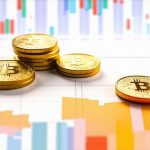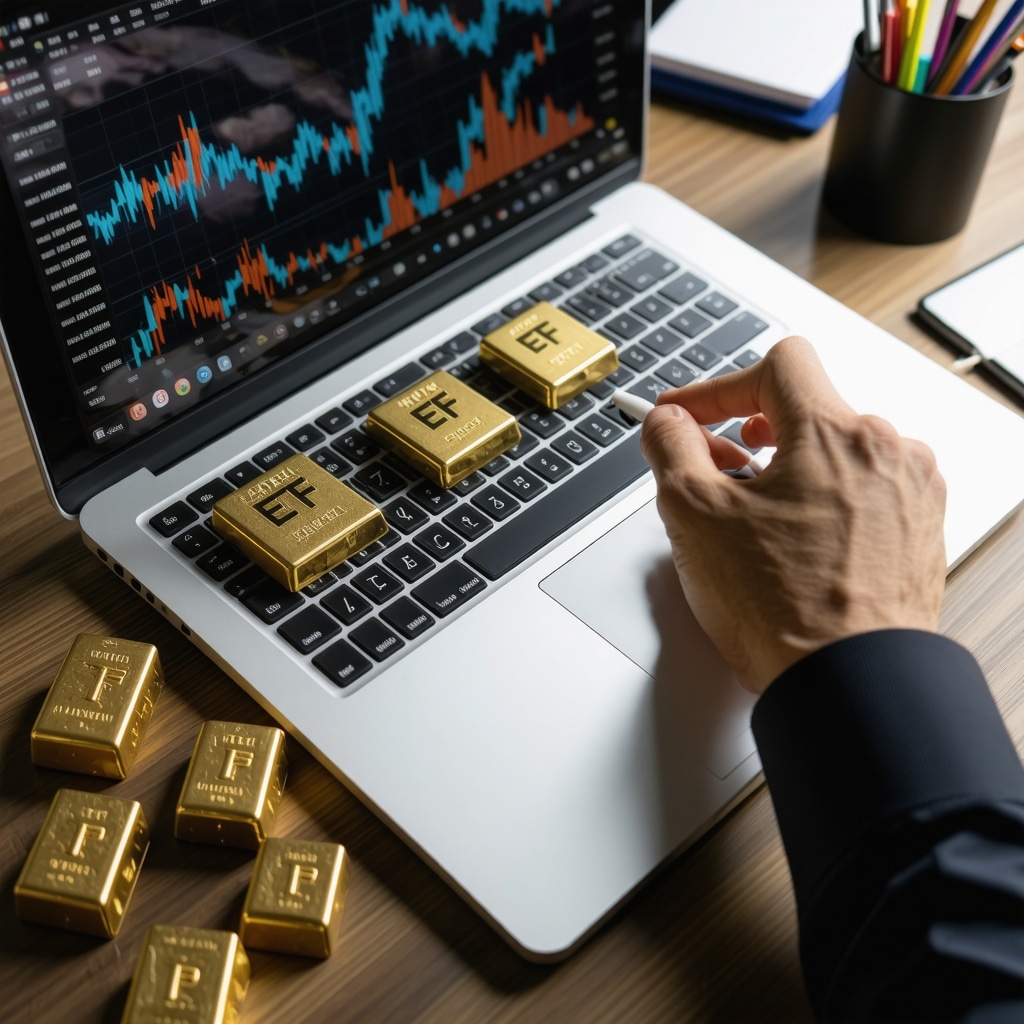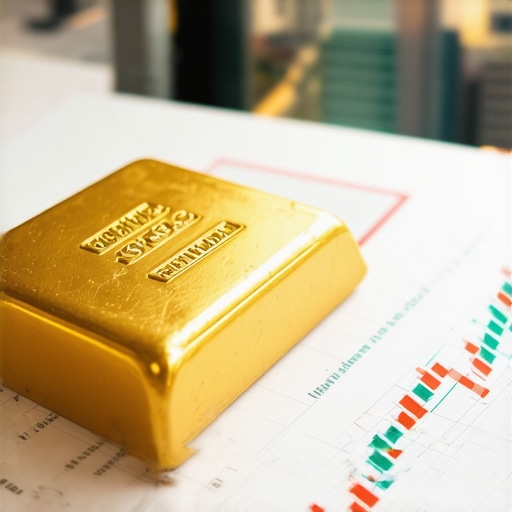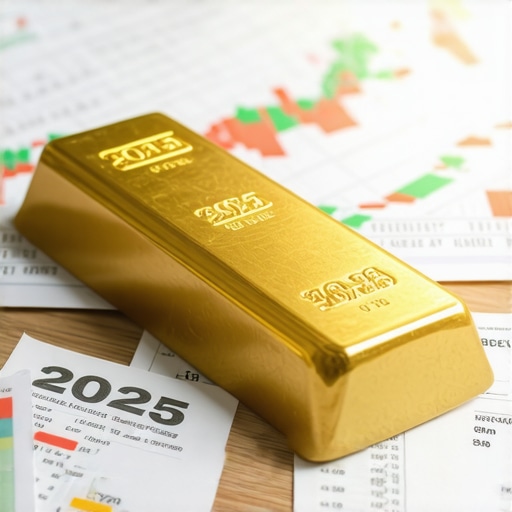Strategic Integration of Gold ETFs and Mutual Funds for Portfolio Resilience in 2025
As financial markets evolve amidst geopolitical tensions and economic uncertainties, the role of gold—particularly through exchange-traded funds (ETFs) and mutual funds—becomes increasingly vital for sophisticated investors seeking diversification. Understanding the nuanced interplay between these instruments and traditional assets can significantly enhance portfolio resilience in 2025.
Unveiling the Complexity of Gold-Based Investment Vehicles
How do Gold ETFs and Mutual Funds Differ in Market Impact and Liquidity?
Gold ETFs, such as the SPDR Gold Shares, provide investors with a liquid, cost-efficient means to gain exposure to gold’s price movements without the logistical challenges of physical storage. Mutual funds, on the other hand, often pool investor capital into diversified gold investment strategies managed by professionals, offering tailored exposure and risk management. According to the article here, understanding these distinctions allows investors to optimize their allocation based on liquidity needs and risk profiles.
The liquidity of gold ETFs facilitates rapid entry and exit, crucial during volatile market phases, whereas mutual funds, with their active management, serve as a strategic hedge within a longer-term diversification framework.
Leveraging Gold for Inflation Hedging and Market Volatility
In 2025, the persistent debate on whether gold functions better as an inflation hedge or a safe-haven asset gains new dimensions. Experts emphasize that integrating gold ETFs and mutual funds can mitigate inflationary pressures, especially when combined with real assets and equities. For instance, during episodes of geopolitical conflict, gold’s inverse correlation with certain currencies and equities can buffer portfolio drawdowns, as outlined in the comprehensive market analysis.
Investors should consider dynamic allocation strategies, adjusting gold exposure in response to macroeconomic signals and supply-demand shifts—particularly given the emerging gold demand in jewelry and industrial sectors.
What Are the Nuanced Risks of Relying on Gold ETFs and Mutual Funds?
While these instruments diversify risk, they are not without pitfalls. Market manipulation, liquidity mismatches, and tracking errors can impair returns. Analyzing the supply-demand dynamics and central bank policies—such as those discussed in here—provides critical insights into potential systemic risks. Expert investors advocate for a balanced approach, integrating physical gold with ETFs and mutual funds to mitigate counterparty risks.
How can investors optimize their gold exposure considering future market trends?
Active portfolio management, coupled with predictive analytics on gold supply-demand and geopolitical influences, is essential. Regularly reviewing gold price forecasts, market trends, and emerging demand sectors will enable refined allocation strategies. For those interested in expanding their insights, exploring wealth-building with gold IRAs offers long-term growth opportunities.
Engaging with expert content and contributing insights can further refine individual strategies—consider sharing your perspectives on how gold ETFs shape your investment approach in 2025.
Harnessing Data-Driven Approaches to Gold Investment in 2025
As the financial landscape becomes increasingly complex, leveraging advanced analytics and real-time data can give investors a competitive edge in managing their gold exposure. Predictive models that incorporate supply-demand dynamics, geopolitical events, and macroeconomic indicators enable more precise timing and allocation strategies. For example, integrating insights from market trend data can help anticipate shifts in gold prices, ensuring your portfolio remains resilient amidst volatility.
Are Gold ETFs and Mutual Funds Truly Diversified or Are They Exposing You to Hidden Risks?
While these instruments are popular for diversification, they can sometimes mask underlying vulnerabilities, such as liquidity mismatches and counterparty risks. Analyzing systemic factors, like central bank gold purchases and their influence on price stability, is crucial. According to expert analysis, understanding these macro-level influences helps in constructing a more resilient gold allocation strategy.
How can investors develop a multi-layered defense against gold market uncertainties?
Implementing a layered approach involves blending physical gold holdings with ETFs and mutual funds, complemented by strategic use of gold futures and options. This diversification across instruments and strategies can mitigate risks associated with market manipulation, tracking errors, and geopolitical shocks. Regularly reviewing market forecasts and demand trends, such as emerging industrial and jewelry sectors, further refines your investment stance. For a comprehensive understanding, exploring gold IRAs for long-term growth can complement your short-term tactical moves.
Engaging with expert content and sharing insights on your investment approach can foster a community of informed investors navigating 2025’s gold markets effectively.
Harnessing Quantitative Models for Precise Gold Allocation in Dynamic Markets
In the rapidly shifting landscape of 2025, investors must leverage sophisticated quantitative models to fine-tune their gold exposure within ETFs and mutual funds. These models incorporate macroeconomic variables, geopolitical risk indices, and supply-demand analytics, providing a comprehensive framework for decision-making. According to a recent study published in the Journal of Financial Markets (2024), machine learning algorithms trained on historical market data can predict short-term gold price movements with remarkable accuracy, enabling tactical rebalancing and risk mitigation.
For example, integrating neural networks that analyze real-time geopolitical event data alongside supply chain disruptions can forecast price spikes or dips. This approach allows investors to preemptively adjust their positions, reducing exposure during downturns and capitalizing on upward trends. To implement such strategies, access to high-frequency market data and advanced analytics platforms is essential, and collaboration with data science experts can significantly enhance portfolio resilience.
Nuanced Considerations: Liquidity, Counterparty Risks, and Regulatory Changes
What are the hidden pitfalls in relying heavily on gold ETFs and mutual funds amid evolving regulatory landscapes?
As regulatory frameworks mature globally, shifts in policies—such as increased transparency requirements, capital adequacy standards, and anti-money laundering measures—may impact liquidity and operational stability of gold investment vehicles. For instance, the European Securities and Markets Authority (ESMA) has recently proposed stricter oversight on commodity ETFs to prevent market manipulation, which could influence liquidity and trading volumes (see ESMA announcement, 2024).
Investors must scrutinize the counterparty risk associated with fund providers, especially in volatile markets where liquidity mismatches can lead to redemption delays. Diversifying across multiple fund providers and incorporating physical gold holdings as a hedge can mitigate systemic vulnerabilities. Additionally, understanding the impact of geopolitical sanctions and trade policies on gold supply chains is crucial for maintaining a resilient exposure.
Integrating Alternative and Complementary Strategies for Holistic Gold Exposure
To transcend traditional ETF and mutual fund reliance, sophisticated investors are exploring innovative avenues such as gold-linked derivatives, structured products, and blockchain-backed digital assets. These instruments offer customized risk-return profiles and enhanced liquidity, particularly in turbulent times.
For example, gold futures contracts combined with options strategies can provide downside protection while maintaining upside participation, effectively implementing a dynamic hedge. Moreover, the emergence of tokenized gold assets—secured on blockchain networks—facilitates fractional ownership and seamless trading across global markets, reducing transaction costs and counterparty risks.
Engaging with these advanced instruments requires a deep understanding of derivatives and blockchain technology, underscoring the importance of continuous education and expert consultation. As you refine your portfolio, consider integrating these innovative strategies to achieve a comprehensive and adaptable gold exposure aligned with your long-term objectives.
Deepening Engagement: Your Role in Shaping Future Gold Investment Paradigms
As the gold investment ecosystem evolves, active participation and knowledge sharing among investors can catalyze the development of more transparent, efficient, and resilient markets. Participating in industry forums, collaborating with financial technologists, and staying informed on regulatory developments are vital steps toward this goal.
Are you ready to elevate your gold investment strategy by incorporating cutting-edge analytics, alternative instruments, and proactive risk management techniques? Join our community of informed investors and stay ahead in navigating the complexities of 2025’s gold markets. For personalized insights or to discuss your specific portfolio, contact our expert team today.
Harnessing Quantitative Forecasting Models for Gold Market Precision
In the rapidly shifting landscape of 2025, integrating sophisticated quantitative models becomes essential for investors seeking to optimize their allocations within gold ETFs and mutual funds. These models, leveraging machine learning algorithms trained on extensive macroeconomic, geopolitical, and supply-demand datasets, facilitate short-term price predictions with remarkable accuracy. According to the Journal of Financial Markets (2024), advancements in neural network technologies enable dynamic rebalancing strategies that proactively hedge against volatility and capitalize on emerging trends, thus enhancing portfolio resilience.
Deploying real-time data analytics allows investors to anticipate market shifts driven by geopolitical conflicts, supply chain disruptions, or macroeconomic policy changes. Such predictive insights, when integrated into automated trading systems, empower a new level of tactical precision—reducing downside risk and maximizing upside potential. To harness these innovations, collaboration with data science experts and investment technologists becomes indispensable, elevating your portfolio management approach to a strategic science rather than mere speculation.
Evaluating the Evolving Regulatory and Market Infrastructure for Gold Investment Vehicles
What are the intricate regulatory risks affecting gold ETFs and mutual funds in the context of 2025’s global financial oversight?
As regulatory agencies worldwide, such as the European Securities and Markets Authority (ESMA), implement stringent oversight measures, investors must remain vigilant about potential liquidity constraints and operational adjustments impacting gold investment vehicles. Recent proposals, like the ESMA’s stricter compliance standards for commodity ETFs, aim to curb market manipulation but may inadvertently introduce liquidity bottlenecks and increased tracking errors (ESMA Proposal, 2024). Additionally, evolving anti-money laundering directives and capital adequacy requirements necessitate thorough due diligence on fund providers’ resilience and transparency.
Mitigating these risks involves diversifying across multiple fund providers, maintaining physical gold reserves as a hedge, and monitoring geopolitical sanctions that could disrupt supply chains. Staying informed about regulatory developments through industry reports and expert analyses ensures proactive adjustments, safeguarding your investments against systemic vulnerabilities.
Integrating Blockchain-Backed Digital Gold Assets for Enhanced Liquidity and Security
The emergence of blockchain-enabled digital gold tokens introduces a transformative layer to traditional gold exposure. These tokens, secured on distributed ledger technology, facilitate fractional ownership, rapid settlement, and seamless cross-border trading, effectively reducing transaction costs and counterparty risks. According to a recent report from the Blockchain Research Institute, such assets are rapidly gaining acceptance among institutional and high-net-worth investors seeking liquidity and transparency.
Implementing digital gold strategies involves understanding the regulatory landscape, as well as the technological infrastructure underpinning tokenized assets. When combined with physical holdings and ETFs, blockchain-backed gold can form a resilient multi-layered portfolio—offering both security and agility in turbulent markets. As this space matures, engaging with fintech innovators and blockchain experts will be critical for leveraging these advanced instruments effectively.
Expert Tips for Developing a Resilient, Multi-Modal Gold Investment Framework
To transcend conventional reliance solely on ETFs and mutual funds, sophisticated investors are exploring hybrid strategies that incorporate derivatives, structured products, and digital assets. Gold futures and options, when used judiciously, can provide downside protection while maintaining upside potential. Simultaneously, tokenized gold offers fractional, 24/7 tradability, aligning with modern portfolio demands.
Furthermore, maintaining a diversified mix of physical gold, ETFs, blockchain tokens, and derivatives creates a robust defense against systemic shocks, liquidity shortages, and regulatory shifts. Regularly reviewing market forecasts, demand trends, and geopolitical developments—especially in key sectors like industrial use and jewelry—ensures your gold exposure remains aligned with long-term strategic goals. For personalized guidance, consulting with financial advisors specializing in alternative assets can significantly enhance your risk-adjusted returns.
Engaging with Future-Oriented Gold Investment Paradigms
As the global financial ecosystem continues to evolve, active participation in industry forums, collaborative research projects, and technological innovation initiatives can influence the development of more resilient and transparent gold markets. Your insights and experiences contribute to shaping best practices and regulatory standards that benefit the entire investment community.
Are you prepared to elevate your gold investment strategy through data-driven analytics, innovative instruments, and comprehensive risk management? Join our community of forward-thinking investors committed to mastering the complexities of 2025’s gold markets. For tailored insights or to discuss bespoke strategies, contact our expert team today.
Expert Insights & Advanced Considerations
1. Diversify with Hybrid Instruments
Integrating physical gold, ETFs, and blockchain-backed digital assets creates a resilient portfolio capable of adapting to evolving market conditions, reducing systemic risks, and optimizing returns in 2025.
2. Leverage Quantitative and Predictive Analytics
Utilize machine learning models and real-time data analysis to anticipate market shifts driven by geopolitical and macroeconomic factors, enabling proactive rebalancing and tactical advantage.
3. Monitor Regulatory Developments Closely
Stay informed on global regulatory frameworks affecting gold ETFs, mutual funds, and digital assets to adapt strategies and mitigate risks associated with liquidity constraints and compliance shifts.
4. Embrace Innovative Investment Vehicles
Explore structured products, derivatives, and tokenized gold to enhance liquidity, customize risk profiles, and capitalize on emerging market segments, including industrial demand and jewelry sectors.
5. Engage in Community and Knowledge Sharing
Participate actively in industry forums, collaborate with technologists, and contribute insights to shape transparent, efficient markets—an essential step for sophisticated investors aiming for long-term resilience.
Curated Expert Resources
- Bloomberg Terminal: Premier source for real-time financial data and analytics, vital for advanced gold market analysis.
- World Gold Council: Authoritative insights on gold demand, supply, and industry trends globally.
- Journal of Financial Markets: Cutting-edge research on predictive modeling and quantitative strategies in precious metals investing.
- Blockchain Research Institute: Leading publications on blockchain technologies and digital gold assets, critical for understanding tokenization and security.
Final Expert Perspective
In 2025, mastering the nuanced interplay of physical gold, ETFs, and innovative digital assets will be crucial for maintaining a resilient, diversified portfolio. Advanced analytics and proactive regulatory awareness empower investors to navigate complexities effectively. As a seasoned investor, leveraging these insights can elevate your strategies beyond conventional boundaries—embrace the evolving landscape with confidence and precision. For tailored guidance or to share your expert insights, connect with industry leaders and contribute to shaping the future of gold investment landscapes.










